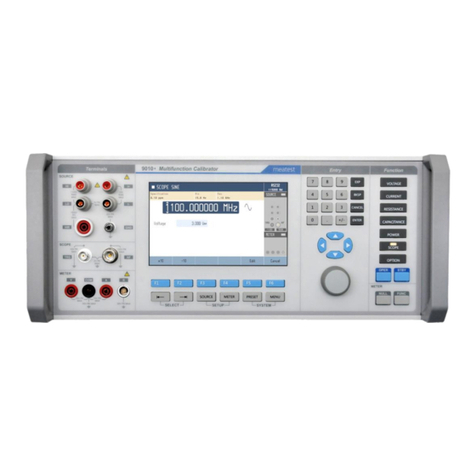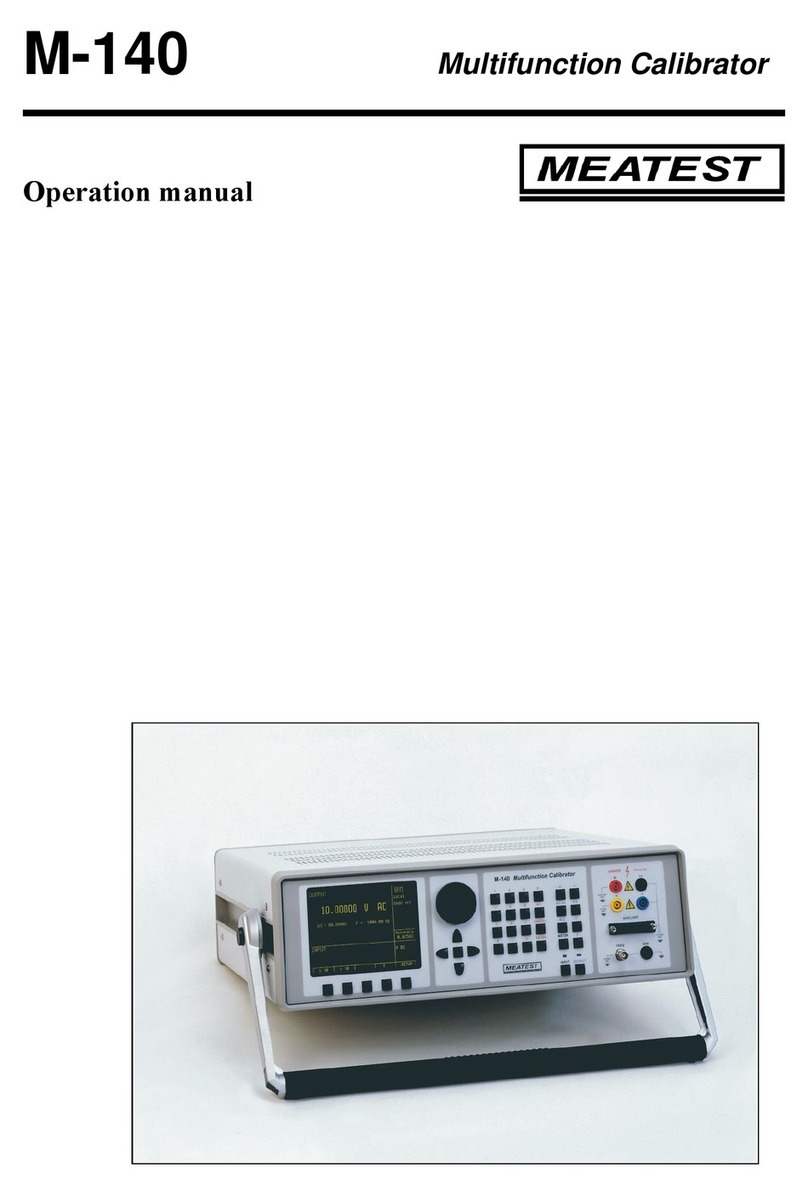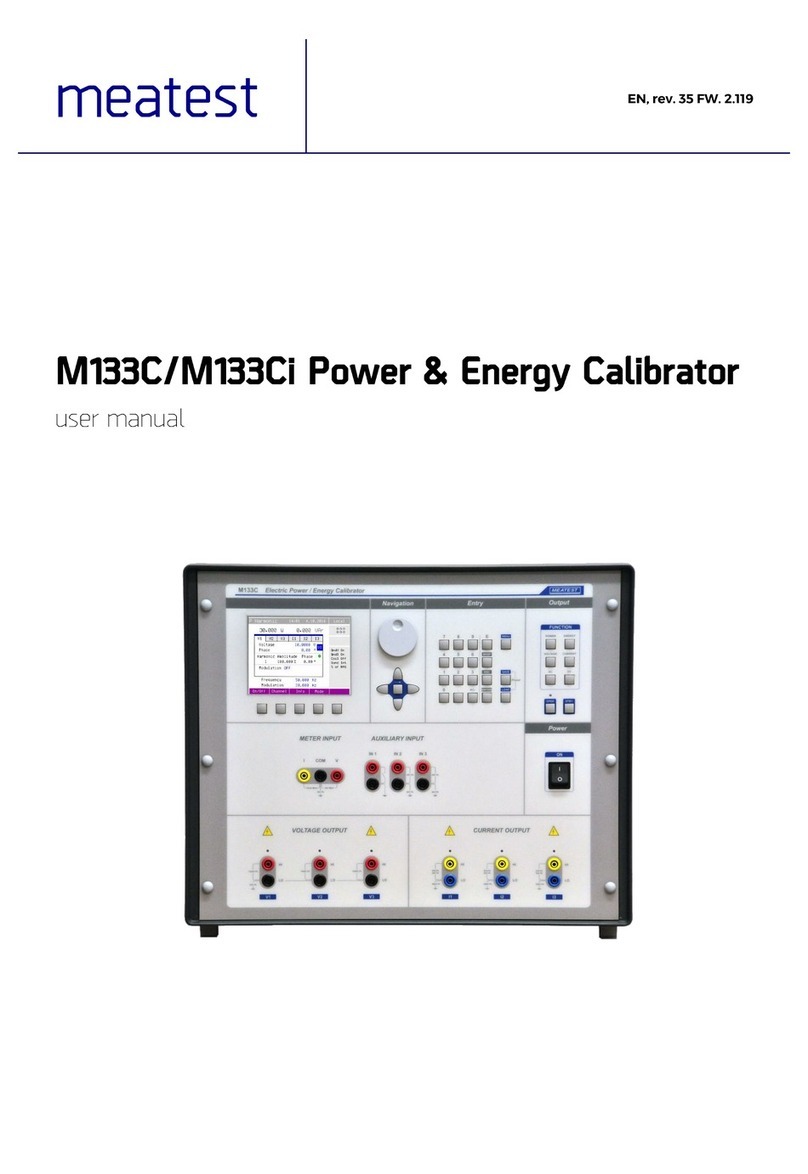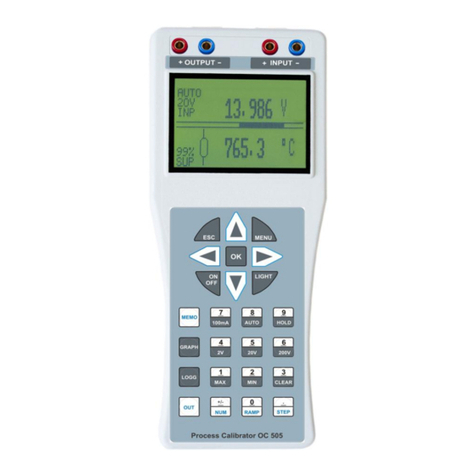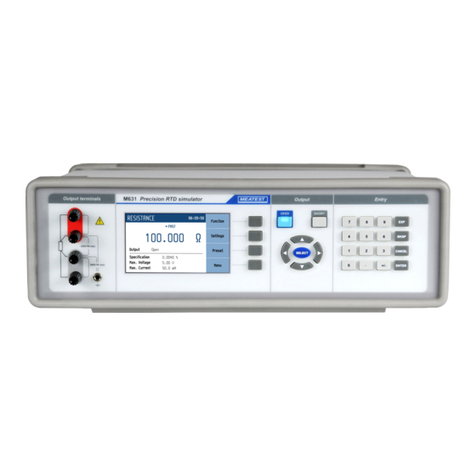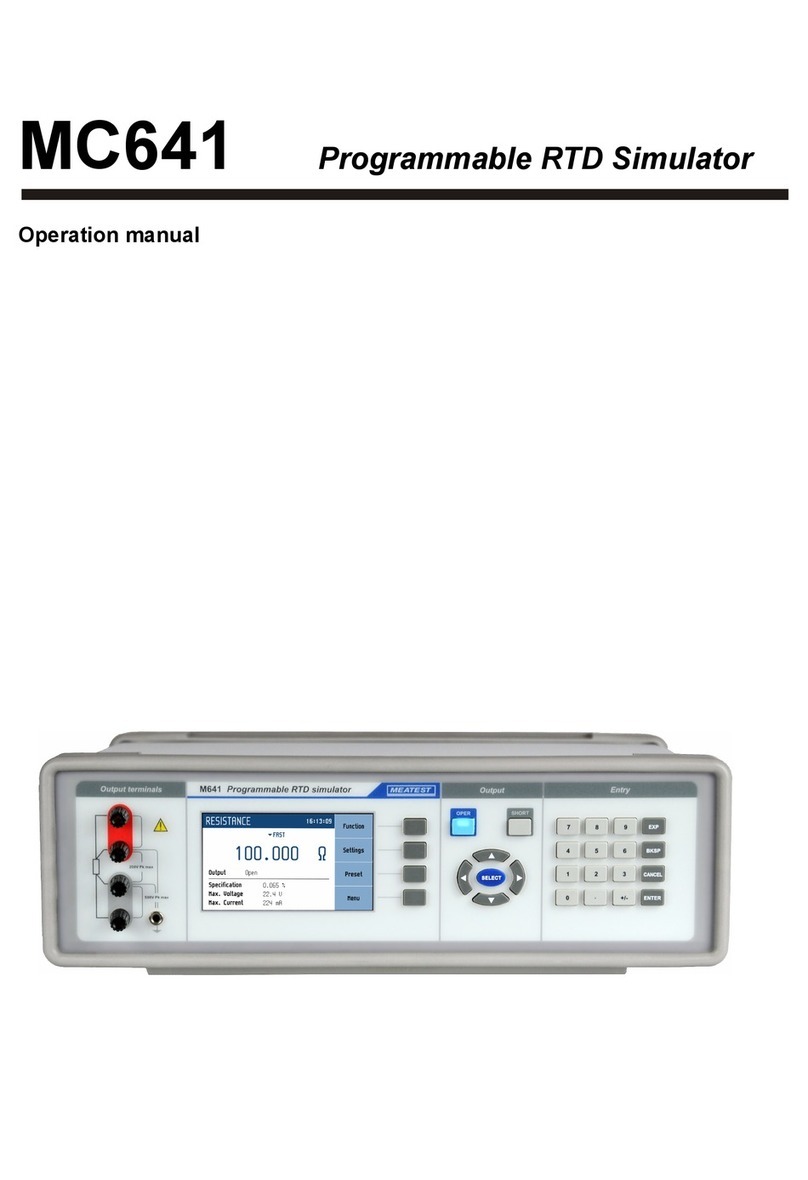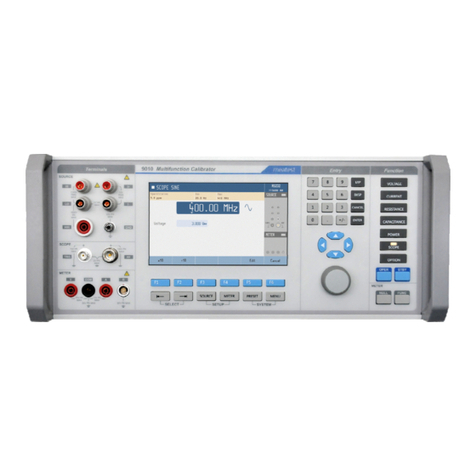MEATEST, s.r.o. M-142 Multifunction Calibrator
User Manual v54 5
Basic Information
M-142 Multifunction Calibrator is a multifunction calibrator, to be used primarily as a standard
for calibration laboratories. It can be used for calibration of any measuring instrument which measures voltage,
current, resistance, capacitance and frequency. It generates fixed non-harmonic signals to allow calibration
of measuring instruments using signals with non-zero harmonic distortion. Frequency, amplitude and duty cycle
of output signal can be adjusted. M-142 Multifunction Calibrator is also suitable for basic calibration
of oscilloscopes.
The calibrator includes a function which simulates resistance and thermocouple temperature sensors
and a built-in multimeter, which can be used simultaneously. Transducers of various types, regulators and
sensing units can be therefore checked without the need for additional measuring instruments.
Basic features of the calibrator include generation of calibrated DC and AC voltage in the range of 0 V
to 1000 V, DC and AC current in the range of 0 A to 30 A (50 A to 1000 A when using a 50-turn coil). The
best accuracy of the calibrator is 0.0015 % for DC voltage. Maximum frequency range is 20 Hz to 100 kHz. The
calibrator can generate periodic non-harmonic signal with defined duty cycle. This facilitates especially the
checks of multimeters and their accuracy when measuring non-harmonic DC signals.
The calibrator can also simulate a resistance or capacitance. Resistance range is 0 to 1000 M;
capacitance range is 1 nF to 100 F, the accuracy suits the calibration of common multimeters. Basic accuracy
of resistance ranges is 0.015 %. Basic accuracy of capacitance ranges is 0.5 %.
Frequency ranges of the calibrator can generate a squarewave signal with definable and calibrated duty
cycle and amplitude in the 1 mV to 200 V range and 0 to 10 kHz frequency range. Moreover, squarewave signal
with very steep rising edge can be generated up to 20 MHz. Frequency ranges can be used to calibrate the
corresponding frequency ranges of multimeters, as well as to calibrate the input sensitivity and time bases of
oscilloscopes.
Powermeter mode can be used to calibrate DC and AC single phase powermeters and energy meters.
Voltage range is up to 240 V and current range is up to 20 A, power factor range is -1 to +1 and the resolution is
1 % in the 40 Hz to 400 Hz frequency range. The voltage output can supply loads up to 30 mA, which allows the
calibration of mechanical powermeters.
Simulation of temperature sensors is yet another feature which can be used to calibrate thermometers
and heat sensing units. The calibrator allows the simulation of all common Pt and Ni resistance sensors and R, S,
B, J, T, E, K, N type thermocouples. Compensation of cold junction of thermocouple is achieved by entering
the respective temperature using the calibrator’s keyboard. The accuracy of simulated temperature sensors
depends on the value and type of sensor and ranges from 0.04 oC to 0.5 oC for resistance sensors and from
0.4 oC to 4.3 oC for thermocouples.
Internal multimeter with 20 mA, 20 mV, 200 mV and 10 V basic ranges and 0.01 % accuracy can be
used to measure normalized signals coming from transducers, external thermocouples or resistance sensors or to
measure pressure and force using strain gauge sensors.
The calibrator includes many other features which facilitate easy use. For example relative deviation from set
value of the output, currently displayed uncertainty of the output signal, calibration and testing procedures etc.
The concept of calibrator control and indication of its status is based on flat luminiscent display, which provides
all necessary information. The calibrator is controlled by opening menus on the display and selection from
menus. Frequently used functions are assigned direct-control keys. The calibrator comes with standard GPIB bus
and RS-232 serial line, which allow the calibrator to be controlled from a PC.
The calibrator can easily fit within calibration systems featuring WinQbase/CALIBER software
support.
